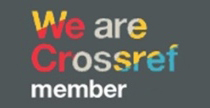ANALISIS SEMIOTIK MOTIF PEUSIJUK PADA KARYA BATIK ACEH
DOI:
https://doi.org/10.51804/deskovi.v7i1.16574Keywords:
Pattern, Batik, PeusijukAbstract
Batik merupakan salah satu hasil karya seni yang sudah menjadi bagian penting dalam masyarakat Indonesia. Propinsi Aceh kaya akan berbagai tradisi yang sampai saat ini masih terus dilestarikan. Salah satunya adalah karya batik Aceh yang menggunakan motif peusijuk sebagai motif utama. Motif yang diterapkan merupakan penggambaran visual yang mengandung tatanan kehidupan masyarakat Aceh. Nilai-nilai pada prosesi peusijuk ditampilkan dalam sebuah karya batik yang secara langsung bisa menambah wawasan geransi muda Aceh. Penelitian merupakan jenis penelitian deskriptif kualitatif. Teknis analisis data yang digunakan adalah teknis analisi deskriptif kualitatif menggunakan pendekatan analisi menurut teori semiotika Pierce. Penelitian batik peusijuk ini bertujuan agar gerenasi muda Aceh semakin mengenal tradisi-tradisi yang ada khususnya peusijuk melalui sebuah karya seni seperti batik.
Semiotic analysis of the peusijuk motif in Acehnese batik artworks is an effort to delve into the profound meanings of the visual symbols it embodies. Peusijuk, as an inspiration for motifs in Acehnese batik, invites interpretations that encompass iconical, indexical, and symbolic analyses. This approach helps reveal cultural, historical, and philosophical values reflected in the geometric patterns and natural elements used in the motif. The research aims to broaden understanding of how motifs derived from the peusijuk tradition serve not only as visual decorations but also as significant mediums in preserving Acehnese cultural heritage through traditional textile art. The values in the peusijuk process are depicted in a batik artwork, which directly enhances insights into the younger generation of Aceh, one of which is the oen manek manue motif inspired by the leaf of a duck. The leaf of a duck is used as one of the media in the ceremony of peusijuk which symbolizes prosperity and coolness. The research is a type of qualitative descriptive study. The data analysis technique employed is qualitative descriptive analysis using the semiotic theory approach according to Pierce's analysis
Downloads
References
Carlo, De Ivone. (2020). Kumpulan Istilah Penting Dalam Dunia Batik. Yogyakarta: ANDI.
Gustami, S.P. (2007). Butir-Butir Mutiara Estetika Timur, Ide Dasar Penciptaan Karya Seni Kriya Indonesia. Prasista. Yogyakarta.
Hemaliza, E. (2011). Peumuliaa Jamee. Banda Aceh: Balai Pelestarian Sejarah dan Nilai Tradisional
Ismail, Badruzzaman. (2003). Mesjid dan Adat Meunasah sebagai Sumber Energi Budaya Aceh. Banda Aceh: Gua Hira.
Koentjaraningrat. (2016). Pengantar Ilmu Antropologi (edisi revisi), Jakarta: Rineka
Cipta Berat.
Kumsatun.(2002). Ragam Hias dan Motif Aceh. Provinsi Nanggroe Aceh Darussalam: Dekranas.
Kurniadi, Edi. (1996). Seni Kerajinan Batik. Surakarta: SebelasMaret University Press.
Leumik, Harun Keuchik. (2016). Kemilau Warisan Budaya Aceh. Banda Aceh: Toko Mas Permata dan Sovenir H. Keuchik Leumiek.
Murtihadi. (1990). Pengembangan Teknologi Batik Menurut SMIK. Jakarta: Departemen Pendidikan dan Kebudayaan.
Nazir, Moh. (2013). “Metode Penelitian”. Bogor: Ghalia Indonesia.
Noth, W. (2006). Handbook of Semiotik. Penerjemah: Abd. Syukur Ibrahim, Ed. Surabaya: Universitas Airlangga
Pilliang, Y. A. (1999). Semiotika Teks: Sebuah Pendekatan Analisis Teks. Jakarta: Gramedia.
Sugiyono. 2014. Metode Penelitian Kuantitatif, Kualitatif, dan R&D. Bandung: PT Alfabeta.
Vera, Nawiroh. (2015) Semiotika dalam Riset Komunikasi. Bogor: Ghalia Indonesia
Wulandari, A. (2022). Batik Nusantara: Makna filosofis, cara pembuatan, dan industri batik. Yogyakarta: Penerbit Andi
Downloads
Published
How to Cite
Issue
Section
License
Copyright (c) 2024 DESKOVI : Art and Design Journal

This work is licensed under a Creative Commons Attribution 4.0 International License.
With the receipt of the article by DADJ Editorial Board and the decision to be published, the copyright regarding the article will be transferred to DADJ. The copyright transfer form can be downloaded here.
DADJ has the right to multiply and distribute the article and every author is not allowed to publish the same article that was published in this journal.

DESKOVI: Art and Design Journal is licensed under a Creative Commons Attribution 4.0 International License.
Under the following terms:
Attribution — You must give appropriate credit, provide a link to the license, and indicate if changes were made. You may do so in any reasonable manner, but not in any way that suggests the licensor endorses you or your use.






